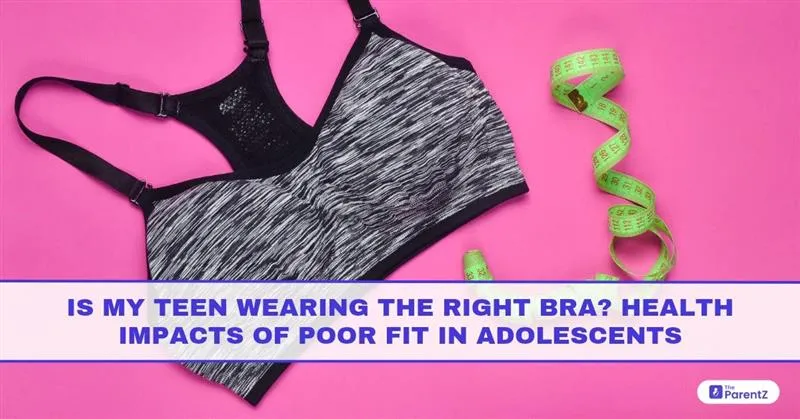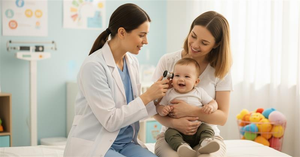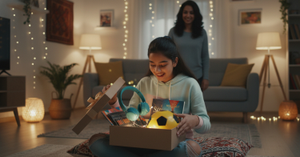The Morning Tantrum That Wasn’t About Clothes
Every morning, Aanya stood in front of the mirror, tugging at her shirt, adjusting her straps, and sighing louder than usual. Her mother assumed it was just one of those teenage phases, maybe she didn’t like her uniform. But it wasn’t the outfit. It was what she wore underneath. The truth revealed itself one Sunday afternoon when Aanya finally said, “This bra hurts. It digs in. And I hate how it makes me look.”
That’s when it clicked. Sometimes, discomfort doesn’t scream in obvious ways. It appears as slouching, skipped PE classes, unexplained irritability, or just “not feeling right in clothes.”
Stage-Wise Breast Growth: A Parent’s Lens
Unlike adults, adolescents are going through an evolving body shape. The breast is still developing both structurally and in terms of tissue density.
Let’s look at bra needs based on what stage your teen is in, rather than using age or cup size.
Stage 1: The Beginning (Breast Buds)
What’s happening:
Small, tender lumps form under the nipples; this is called thelarche and marks the start of puberty.
What your teen may say:
“My chest feels weird.”
“It hurts if someone bumps into me.”
Bra need:
None urgently, but many girls feel self-conscious. A soft, seamless crop top or bralette (like camisoles with support) can provide gentle coverage.
Mistake to avoid:
Introducing padded or molded bras at this stage. It sends the wrong message and physically offers more structure than needed.
Stage 2: Early Development
What’s happening:
Breasts begin to project slightly. Nipple area becomes more prominent. There may be some visible outline under clothes.
What your teen may say:
“Can people see it through my shirt?”
“I don’t like changing in front of others.”
Bra need:
A snug, cotton training bra with no wires. Fabric should move with her, not against her.
Health insight:
Skin in this area is sensitive and still stretching. Poor-quality fabrics or tight elastics can cause rashes, fungal infections, or blocked sweat glands.
Stage 3: Moderate Growth & Physical Activity
What’s happening:
Tissue weight increases. Breasts bounce while walking or during activities. Sensitivity rises.
What your teen may say:
“It hurts during PT.”
“My bra keeps shifting.”
“I feel embarrassed running.”
Bra need:
Lightly-lined support bras for daily wear and a soft, stretchable sports bra for movement.
Tip:
You don’t need a tape measure. Many apps like Adira’s FitBot, Jockey India’s Bra Fit Tool, or YouTube tutorials by verified channels demonstrate “hand-measurement” tricks using strap position and cup fullness. Let your daughter try them privately.
Parent insight:
Buy one of each style daily and a sports bra and let her experiment with comfort in different settings.
Stage 4: Fullness and Shape Definition
What’s happening:
Breasts have a fuller shape but are still maturing. The upper breast curve becomes visible, and asymmetry may exist.
What your teen may say:
“This one fits better than the other.”
“Straps leave marks.”
“I look weird in t-shirts.”
Bra need:
Full-coverage teen bras with good side support. Sports bras should be impact-appropriate—i.e., not flattening the chest, but holding it comfortably.
Health concern:
Wrong fit at this stage can lead to:
- Postural strain
- Neck or shoulder pain
- Restricted lymph drainage
- Indentation scars
- Chronic skin irritation under the bust line
Tip for parents:
If she’s adjusting her straps constantly or not wearing bras at all, it’s not rebellion; it’s likely that nothing fits right yet.
Stage 5: Near-Mature Contour
What’s happening:
Breasts have reached a shape close to adult size but are still influenced by hormones, weight, and growth spurts.
What your teen may say:
“I feel uneven.”
“I want something that holds everything better.”
Bra need:
Molded bras for structure (without pads), broader back bands for support, and firm yet soft sports bras. Teens in this stage may begin exploring everyday underwired bras—but only if they feel ready.
What to guide:
Make sure wire placement doesn’t rest on breast tissue. Explain how support differs from compression. Emphasize comfort and health over looks.
How to Know a Bra Is the Wrong Fit (Even Without a Measuring Tape)
Watch for these subtle signs:
- Strap marks or band lines after short use
- Cups that wrinkle, gape, or overflow
- Frequent adjusting or pulling the front downward
- Complaints of “back ache” or “shoulder pinching”
- Reluctance to wear fitted tops or participate in movement-based activity
What the Science Says
A UK-based study published in BMJ Open Sport & Exercise Medicine found that 57% of girls aged 11–17 skipped PE classes due to breast discomfort or embarrassment—largely related to poor bra fit.
The Indian Academy of Pediatrics has emphasized in their 2023 Adolescent Wellbeing Guidelines that early intervention in body comfort improves girls’ school engagement, confidence, and reduces dropouts due to poor body image.
Additionally, early physical strain from tight or unsupported bras can lead to:
- Musculoskeletal strain
- Improper lymphatic drainage
- Repeated fungal infections in hot climates
- Emotional withdrawal during social situations
How to Help Without Making It Awkward
- Create privacy: Don’t bring up bras at the dinner table or in front of relatives. Offer to go shopping or browse online together when alone.
- Let her try digital tools: Many teens are more comfortable checking YouTube tutorials or using size guide quizzes before speaking up.
- Avoid “boob” jokes: Light-hearted teasing from family often makes girls feel observed, not supported.
- Normalize changes: Say things like, “Your body’s growing strong and beautiful, let’s make sure it’s supported right.”
And Yes, She Will Outgrow Today’s Bra
Teen breasts are not static. Hormones, weight, nutrition, and stress levels all affect breast size and feel. Reassessment every 6–8 months is ideal.
Encourage her to try on bras like she tries on shoes, and sometimes what felt great last year simply won’t work now.
And if she insists on one style all the time, gently suggest alternatives and explain how different days and activities need different kinds of support.
Final Thoughts for Parents
The right bra does more than cover; it comforts, supports, and builds self-trust. In adolescence, when so much already feels uncertain, a well-fitting bra becomes part of a girl’s silent armor.
So if your teen is moody, skipping PE, or complaining about “itchy” uniforms, look deeper. It may not be what she’s wearing on the outside. It could be what’s hidden underneath, causing her discomfort every single day. Being the parent who understands that and helps her choose better is one of the simplest, yet most lasting, gifts you can give.








Be the first one to comment on this story.